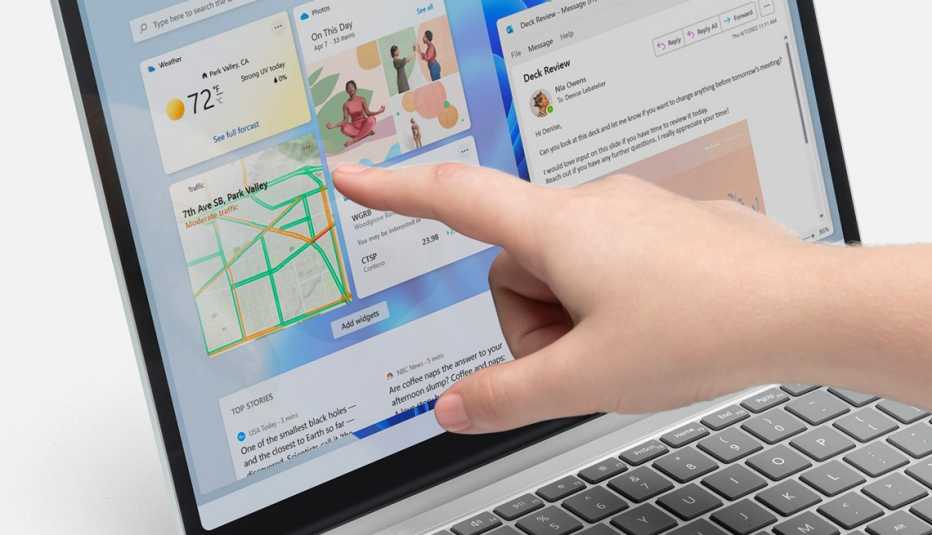Staying Fit


If you’re shopping for a new computer — perhaps taking advantage of yearly back-to-school sales open to all this time of year — you might have noticed that laptops have slimmed down considerably.
Who knew PCs were better at dieting than we are? Borrowing many of the features that make a tablet appealing — its fast performance, light weight, thinness and touch screen — you might think that laptops have an identity crisis, but it’s simply the new norm.


AARP Membership— $12 for your first year when you sign up for Automatic Renewal
Get instant access to members-only products and hundreds of discounts, a free second membership, and a subscription to AARP the Magazine.
Laptops now outsell desktops 3-to-1, evidence of a world shifting more toward mobile devices. About 77 percent of U.S. adults owned a laptop or desktop computer in 2021 vs. 85 percent who owned smartphones.
Because of these exciting innovations, buying a new computer can be overwhelming. So here’s a look at what’s trending and a few other items to consider.
A common setup is the use of a docking station, with monitor and other peripherals attached so “your laptop becomes a desktop” through a few easy connections, says Ed Bott, author of ZDNet’s Ed Bott Report. “And then you unplug it and you walk away, and it’s a laptop again. So you get the best of both worlds.”
Because of these exciting innovations, buying a new computer can be overwhelming. But before you think about features, you’ll need to decide on an operating system:
- PCs generally use the Microsoft Windows operating system; Windows 11 is the latest version.
- Apple Macs have a fan base of users who have other Apple devices. The operating system scheduled to debut in the fall is macOS Ventura; macOS Monterey is in place now.
- Chromebooks are bare-bones and best for uses involving an internet connection. These laptops are based on the Google Chrome operating system, which is up to a variation of version 103 released July 20.
After that, take a look at what’s trending and other items to consider for your next machine.
1. Touch screens and convertibles
Keyboards are still ideal for long-form typing, but touch screens are far more intuitive for other tasks. Tapping, flicking, swiping and pinching feel natural, especially when you are browsing the web, looking at photos, playing games and reading e-books.
Macs don’t have touch screens, but many Windows PCs and Google Chromebooks do. Computers called “2-in-1s” or “convertibles” are both a laptop and tablet, so you don’t need to buy two separate devices.
In most cases, the screen of a 2-in-1 bends back 360 degrees, like the ASUS Flip family, which tucks the keyboard underneath when you don’t need it, so you can carry and use it like a tablet. With other models, like Microsoft’s Surface Go 3, you can remove the screen, leave the keyboard on a desk or table, and bring the screen with you to use as a tablet. For obvious reasons, sometimes this kind of 2-in-1 is referred to as a detachable computer.
2. Solid state drives, not hard disks
For storage — the number of files your device can hold, you’ll notice many computers today offer solid state drive (SSD) memory instead of a hard disk. Generally, SSDs are preferred.


































































More From AARP
Bye-Bye, Passwords? Why Passkeys Can Be the New Way to Log Into Apps, Sites
Companies look for high-tech ways to block criminals from our private information
Learn the many ways to change your display settings
Staring too long at your computer monitor can strain your vision. Find out how you can adjust your screen settings to make it easier on your eyes.
Are You Ready if a Ransomware Attack Hits Your Computer?
Businesses and governments are typical targets, but individuals can be victims, too